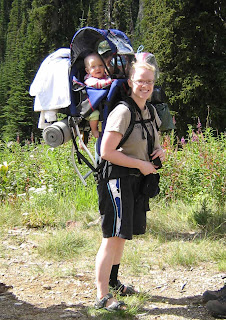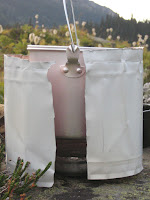As you descend the river rock path to the open meadow a hand painted sign greets, “I sowed my dreams here, please tread lightly.” Johnny, a Bolivian who fell in love with the country after spending some time in Europe has certainly sown something wonderful.
For about 28 years he has called the small town of Sorata home. Since that day 28 years ago, he has turned this riverside forest into his own paradise. This true oasis is filled with blossoming fruit trees, beautiful flowers and wild anis.
The accommodation caters to everyone from campers who want to bring their own tent and use the outdoor kitchen to multi-bed sleeping rooms with shared bathrooms to clean and tidy cabañas (cabins) with living rooms and private kitchens. They even have matrimonial suites with private bathrooms and towels folded to look like flowers. The only downside in my experience was that some of the beds sagged.
Oh, and all these bathrooms boast tankless hot water heaters (which equate to long hot showers… and I mean hot).
Johnny has moved his restaurant out of the town center and into his balcony. A great decision. The new balcony location shares the warm feel of locally cut and personally worked eucalyptus wood. In addition to this and complementing the friendly and tastefully decorated dining area is the view across the valley of the local peak of Illampu (6400M+). The food is excellent. From goulash to crepes you wont be disappointed. The soups and salads made from his own garden vegetables are a real treat. Oh… Make sure you try the steak with the garlic sauce. It is massive and excellently grilled.
If you are brave, you can even try their ambient temperature swimming pool or pick up some snacks from the Kiosk.
Our kids loved the geese, ducks and turkeys that wander in the lower meadow and spent a good deal of time climbing and playing in the tree fort. They would have spent all of their time out there if it hadn’t been for the rain (we visited in the wet season).
The town of Sorata itself offers various forms of tourism from mountaineering, multi day hikes (up to the glacier fed lake), mountain biking or a fun tour of “gruta San Pedro” (a cave with a navigable lagoon and the friendly chirp of bats). They even list sport fishing as an option, (although, we didn’t have any success with that).
All in all, the stay was quite enjoyable. We hope to visit them again in the dry season and take advantage of all that Sorata has to offer.
If you missed the previous post on Sorata and what to see a bit more of the scenery, take a look at the brief comments and videos:
Fishing in Sorata
San Pedro Caves
 The Outdoor Adventure Giving you tips, tricks & recommendations to help make adventuring in the Outdoors fun, safe & exciting for you and your kids.
The Outdoor Adventure Giving you tips, tricks & recommendations to help make adventuring in the Outdoors fun, safe & exciting for you and your kids.







